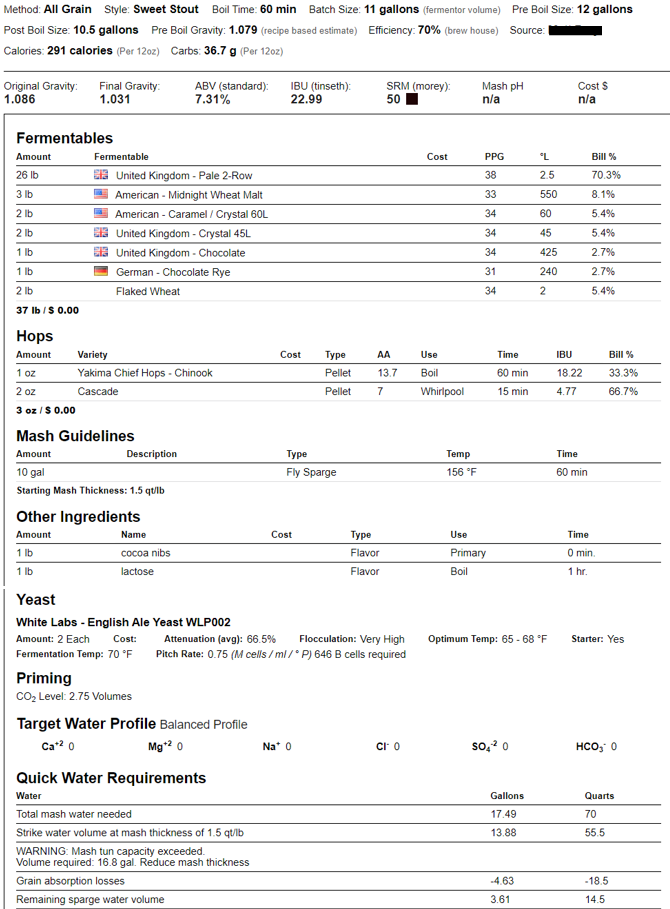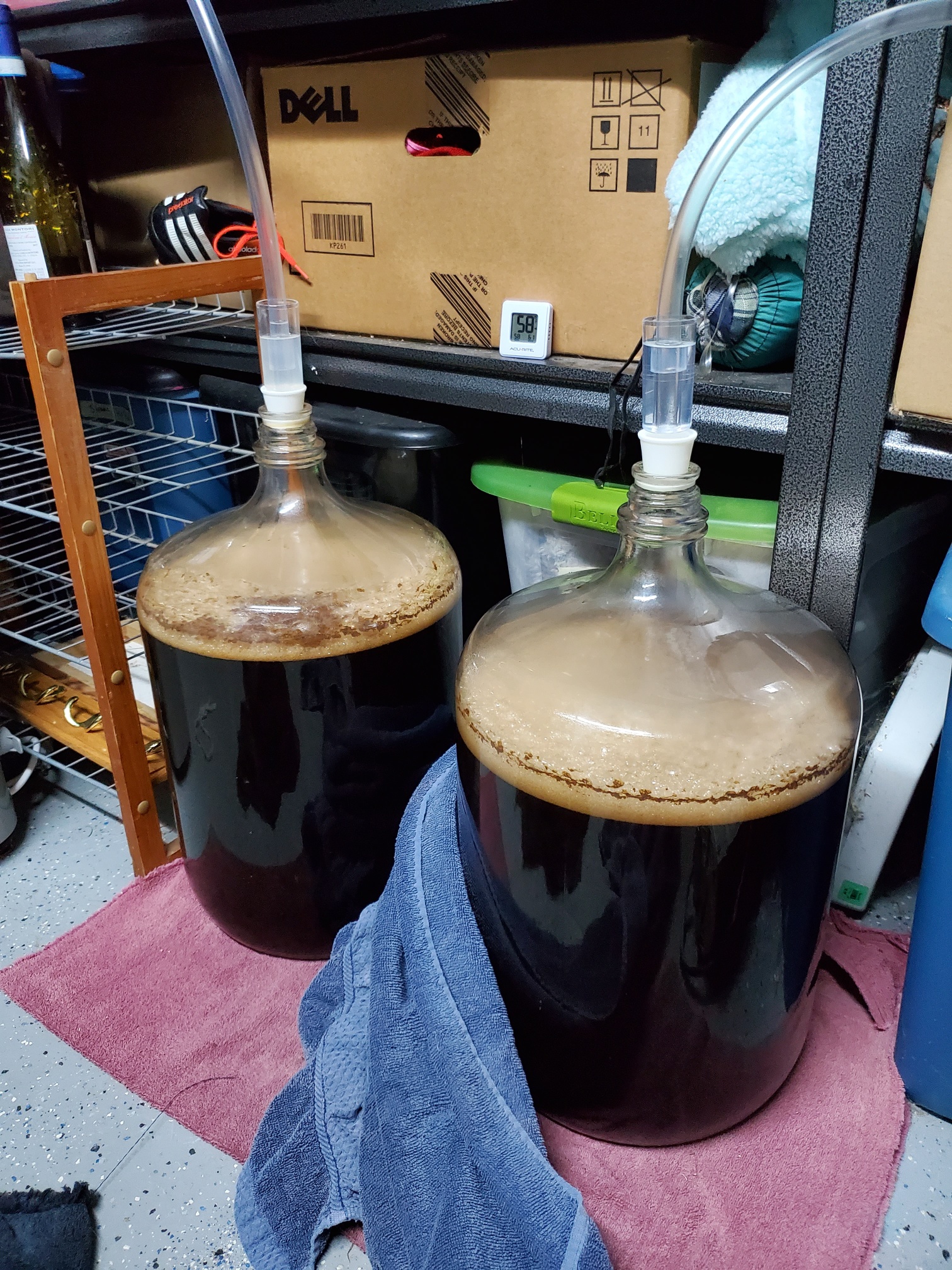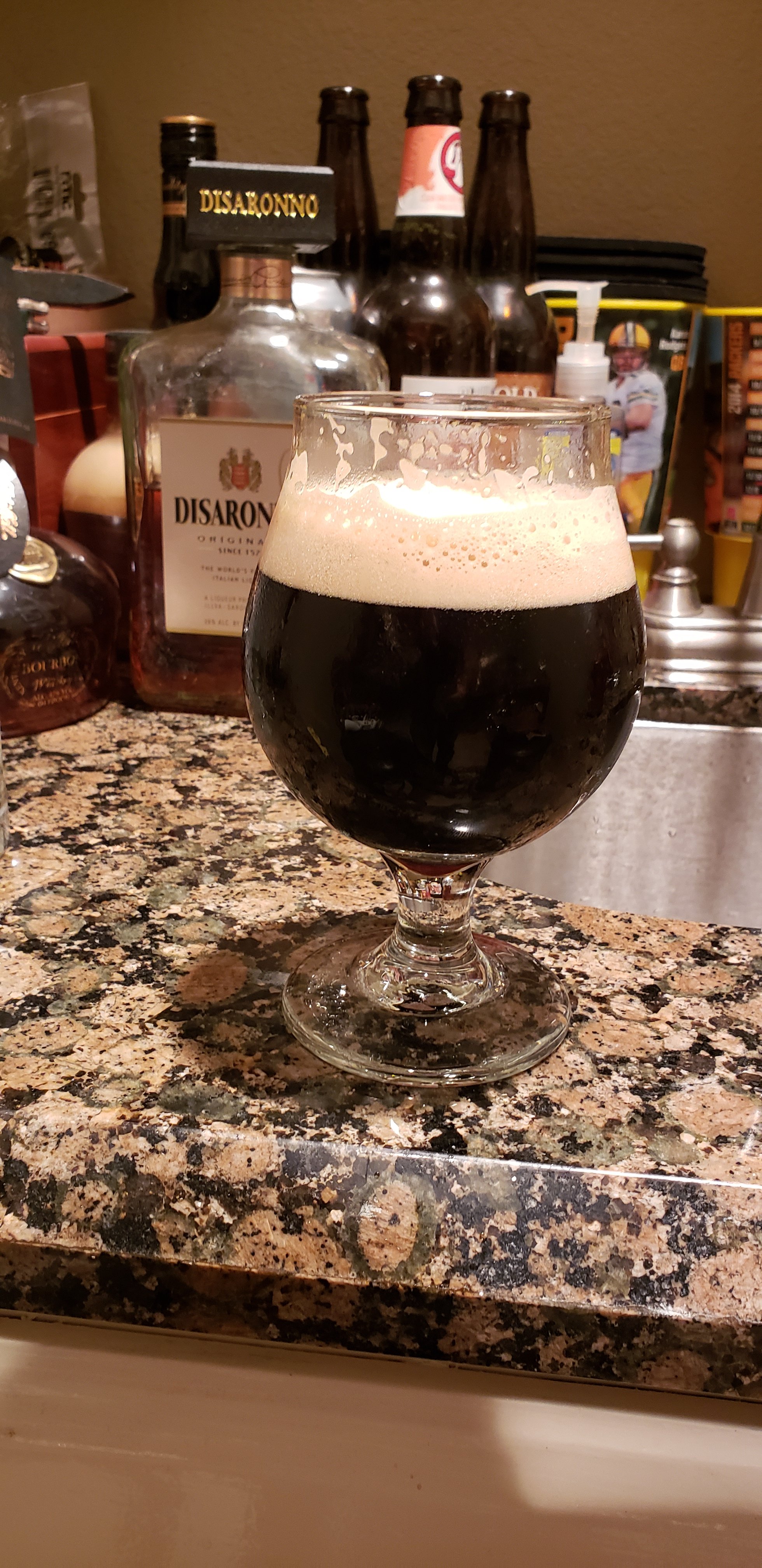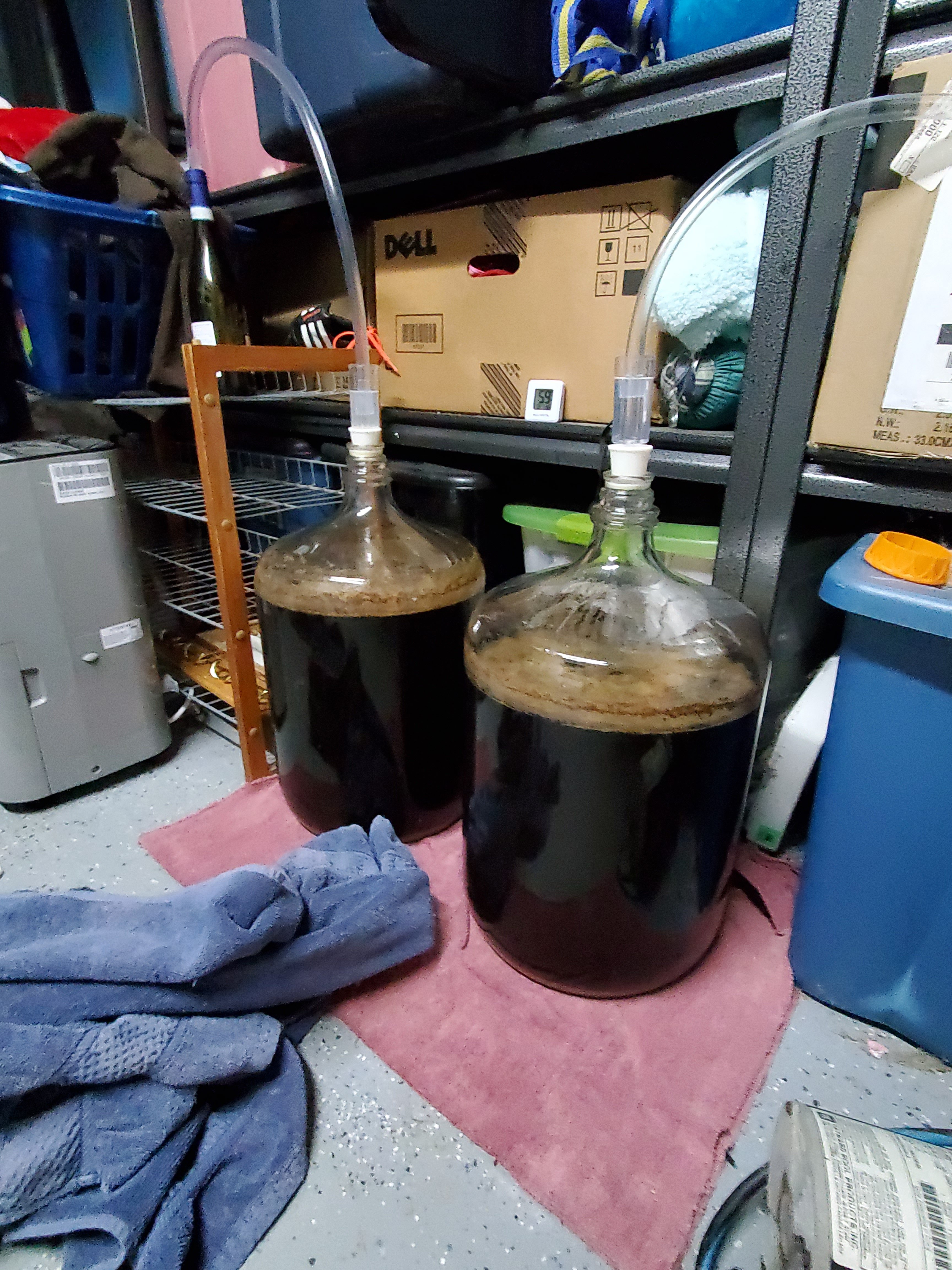This will be my first attempt at a stout and I feel I have pretty lofty goals as I want something that is dark, rich, thick, sweet and chocolatey. Good body and mouthfeel are a must.
I just had a Big Ditch Mudlarker Imperial Peanut Butter Stout and while I wasnt too thrilled with the peanut butter flavor, the rest of the beer was just what I am looking for.
I have a few questions maybe some of you experts can point me in the right direction.
1 - We will be using lactose but should we add maltodextrin as well?
2 - I think the hop amount may be a little much - I want a slight bitter but not too much.
3 - Will we need to rack to a secondary? Never done that before but I think this might be a recipe where I should.
4 - Will I be able to serve this from a picnic tap or am I just asking for trouble?
5 - If I cant use picnic taps do I need to get some kind of special stout faucet or can I just go with a stainless steel nukatap?
6 - I hear a lot of people soaking their cocoa nibs in vodka before adding to the fermenter - is this necessary? I want big chocolate flavor but dont want any off-vodka flavors in my brew.
7 - The grain bill is already high - how can I get some more ABV in there without adding more grains (I dont want to add any kind of bourbon flavor to it)
Feel free to comment, recommend or criticize my recipe.
Thanks for any help you can give.

I just had a Big Ditch Mudlarker Imperial Peanut Butter Stout and while I wasnt too thrilled with the peanut butter flavor, the rest of the beer was just what I am looking for.
I have a few questions maybe some of you experts can point me in the right direction.
1 - We will be using lactose but should we add maltodextrin as well?
2 - I think the hop amount may be a little much - I want a slight bitter but not too much.
3 - Will we need to rack to a secondary? Never done that before but I think this might be a recipe where I should.
4 - Will I be able to serve this from a picnic tap or am I just asking for trouble?
5 - If I cant use picnic taps do I need to get some kind of special stout faucet or can I just go with a stainless steel nukatap?
6 - I hear a lot of people soaking their cocoa nibs in vodka before adding to the fermenter - is this necessary? I want big chocolate flavor but dont want any off-vodka flavors in my brew.
7 - The grain bill is already high - how can I get some more ABV in there without adding more grains (I dont want to add any kind of bourbon flavor to it)
Feel free to comment, recommend or criticize my recipe.
Thanks for any help you can give.

Attachments
Last edited:













![Craft A Brew - Safale S-04 Dry Yeast - Fermentis - English Ale Dry Yeast - For English and American Ales and Hard Apple Ciders - Ingredients for Home Brewing - Beer Making Supplies - [1 Pack]](https://m.media-amazon.com/images/I/41fVGNh6JfL._SL500_.jpg)















































